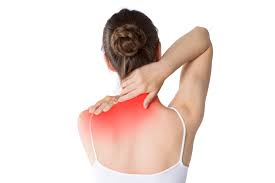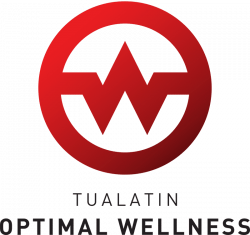Neck & Back Pain
What causes neck pain and stiffness?
Neck pain is a very common problem for many people. According to the Centers for Disease Control and Prevention (CDC), about 15% of adults over the age of 18 experience neck pain. Neck pain is discomforting, and can happen after an injury or it can come about over time due to age, poor posture, repetitive movements that strain the neck, and other causes.
While some people may simply accept neck pain due to their strenuous work or aging body, neck pain is treatable and should be diagnosed by a health care professional like a chiropractor. Also, pain in the neck can be a symptom of a more severe problem, especially if you experience neck pain in addition to numbness.

Common Causes of Neck Pain
The neck carries the weight of the head and is responsible for supporting it while staying aligned with the rest of your spine. The neck is particularly vulnerable to conditions and injuries that may cause pain and restrict your mobility.
Wear and Tear
The neck carries the weight of the head and is responsible for supporting it while staying aligned with the rest of your spine. The neck is particularly vulnerable to conditions and injuries that may cause pain and restrict your mobility.
Muscle Strain
Muscle strains don’t only occur from working a job of physical labor where you overuse your neck muscles. Extended periods of time sitting at your computer, reading, or looking at your phone can cause muscle strain in the neck too.
Nerve Compression
The spinal cord is an aggregate of nerves that run along the spine. Nerves connect to the spinal cord through the gaps between the bones. Herniated discs are rips in the spinal cord that cause fluid to spill out through cracks. They can pinch nerves and cause nerve compression. Bone spurs can also put pressure on nerves going through the spinal cord, both of which can lead to neck pain and stiffness.
Disease
Some diseases may cause or worsen neck stiffness and pain. Examples include bone cancer, meningitis, and rheumatoid arthritis.
Injury
Injuries are a common cause of neck pain and stiffness. Particularly, car accidents that cause whiplash can strain the neck and cause neck pain. Whiplash is an auto injury where the head is quickly pulled forward and backward, often resulting in a very sore, stiff neck.
What are the symptoms of neck pain and stiffness?
Symptoms of neck pain and stiffness can vary from person to person and include the following:
- Limited motion of the head and neck with a feeling of rigidness in the neck
- Acute or stabbing pain in the neck
- Pain radiating from the neck, possibly extending into the shoulders, head, arms, hands, or fingers
- Soreness in the muscles and tissue around the neck
- Muscle spasms
- Muscle tightness
- Headaches
Increased pain when holding the head in one position for extended periods of time (working at a desk or driving long hours).
Treatment of Neck Pain and Stiffness:
There are many chiropractic treatments for neck pain and stiffness, none of which require surgery or drug use. Below, we will go over a few common treatments for neck pain and stiffness.
Neck adjustments
Neck adjustments are a common method used to reduce neck pain and increase mobility. Neck adjustments, also known as cervical manipulation, is a procedure that uses small movements on the joints of the neck to readjust its alignment. It can increase the range of motion and mobility in the neck, spine, and nearby muscle tissues. After receiving neck adjustments, you should experience less pain and stiffness as well.
Cervical mobilization
Cervical mobilization involves the chiropractor carefully moving the bones in the neck left to right and in figure 8 motions. This will stretch the joints in the neck and decompress the vertebrae. This procedure will help to restore movement to the neck.
Cervical manual traction
Cervical manual traction is a technique that stretches and decompresses the spine. It reduces tightness and stiffness in the neck and improves mobility. It may be used in conjunction with cervical mobilization.
Cervical drop
Cervical drop involves a special chiropractic table where the head is positioned in a locked position on the table. Then, the chiropractor uses a thrust motion or gradual increase of pressure on the area that needs adjustment. This technique should reduce restrictions on the neck in order to improve mobility.
Other treatments
There are other treatments for neck stiffness and pain. Each one is used depending on the person and the condition/cause of the pain. Seeing a high-quality chiropractor for a diagnosis is the best way to determine which treatment option is best for you.

